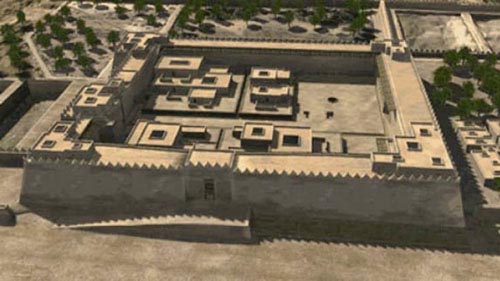Dholavira Ruins

Information on Dholavira Ruins (Kutch, Gujarat) - History & Architecture
There are many sites in India that have archaeological significance. One such site is the Dholavira where the ruins present there will give one a lot of information about the ancient civilisation that once flourished there. Dholavira ruins also belong to one such great civilisation, the Indus valley civilisation. The archaeology department and historians department were able to discover the site in 1989. During the time large urban centres were discovered in 1989 and one of them was the Dholavira. People in Kutch locally call them Kotada timba and it houses the ruins of the Harappan civilisation.
Dholavira Ruins Architecture
The site of Dholavira is said to be even older than the Lothal and the shape and the structure of the site is rectangular. It spreads over an area of 54 acres with 771 m long and 616 m width. The city of Dholavira had its three division viz. the citadel, the middle town and the lower town. The acropolis and middle town were much better furnished and had defence system with gateways and walls, large open spaces and proper street system unlike the lower town. There was a castle that was guarded by double ramparts and next to the castle there was the other structure called 'bailey' where some people with high position lived. The most important feature to notice here is that the houses, streets and other structures in the Dholavira were made out of pure stone blocks making the structure very beautiful unlike Harappan and Mohenjo-Daro civilisation.
Dholavira Ruins History
The place is definitely a place of historical significance for there are ruins found that tells one about the glorious history of one of the major civilisations in the Indian soil. When the excavation was going on in the site the archaeological Survey of India found many things such as the bones, beads, seals, ornaments made of gold, silver and terracotta vessels. The records have shown that the site was a very important trade site and connected well the south Gujarat with the adjoining areas and also of far west.
The excavation also showed the people who lived in Dholavira were also expert in water conservation and they showed signs of sustainable usage of the resources given. There were reservoirs and channel system that ensured that every household received clean water. The findings have revealed that the original people of Dholavira had constructed about 16 such water tanks within the premises, somewhere storing for drinking water while some were bathing tanks with several steps descending inwards, in the ancient time. Therefore the Dholavira is still a site that bears huge historical significance even today. It is an important site to witness as one can soak in the glorious history which has left is footprints for the present generation. It is also important from historical as well as from educational point of view.
Dholavira Ruins Tourism Importance
This historical site has been a tourist hot spot for many years ever since it was discovered and has been made open to public by the government of India. Travellers are going to love this place because along with the great historical site one can also see the different colours of the place and in and around. The best time to visit the place would be during winters as the weather would not be that hot and staying would not be a problem given the accommodation facilities in nearby areas of Bhuj and Gandhidham.
- Andaman Nicobar Monuments
- Andhra Pradesh Monuments
- Assam Monuments
- Bihar Monuments
- Chhattisgarh Monuments
- New Delhi Monuments
- Goa Monuments
- Gujarat Monuments
- Haryana Monuments
- Himachal Pradesh Monuments
- Jammu and Kashmir Monuments
- Karnataka Monuments
- Kerala Monuments
- Madhya Pradesh Monuments
- Maharashtra Monuments
- Odisha Monuments
- Punjab Monuments
- Rajasthan Monuments
- Tamil Nadu Monuments
- Telangana Monuments
- Uttar Pradesh Monuments
- West Bengal Monuments